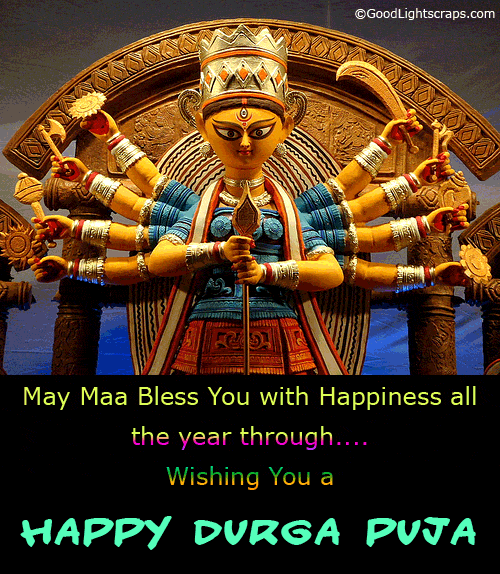The BLOG is opening :
Dates for Durga Puja Celebrations, 2011
Panchmi | 1st October 2011 | Saturday |
|---|
Shashthi | 2nd October 2011 | Sunday |
| Saptami | 3rd October 2011 | Monday |
| Mahaa-Ashtami | 4th October 2011 | Tuesday |
| Mahaa-Nabami | 5th October 2011 | Wednesday |
| Dashami - Vijya | 6th October 2011 | Thursday |
| Lakshmi Puja | 11th October 2011 | Tuesday |
| Kali Puja | 26th October 2011 | Wednesday |
Durga Puja Celebrations
 The celebration of Durga Puja goes very far back in history and there are abundant references to it in India literature from 12th century onwards. However, today Durga Puja is generally a community festival. The Puja celebration over the years has changed color often. Earlier, it was the most expensive of all festivals and could only be performed by the rich and the powerful like feudal lords, rajas and big businessmen. However, it always evoked great enthusiasm and popular support.
The celebration of Durga Puja goes very far back in history and there are abundant references to it in India literature from 12th century onwards. However, today Durga Puja is generally a community festival. The Puja celebration over the years has changed color often. Earlier, it was the most expensive of all festivals and could only be performed by the rich and the powerful like feudal lords, rajas and big businessmen. However, it always evoked great enthusiasm and popular support.
But in today's ethos, The evolution of many clubs, associations and societies has made the Puja cosmopolitan in character. The social and ritualistic significance of the Puja has also been modified to a great degree. Today, this festival has become an occasion for pageantry and extravaganza. Age-old conch shells and drums have given way to loud film songs and sometimes the goddess is modeled on popular film actresses. On the flip side, animal sacrifices, a must earlier, have been dispensed with at many places and shrines.
While earlier Durga was worshiped alone, now it is, more often than not, the goddess with her family. Durga is portrayed as the supreme head; and the presence of Ganesha, Kartikeya, Shiva etc marks a wholesome picture of divinity. In southern India celebrations constitute a display of images of God and toys at home for nine days. But despite the various ways in which this festival is celebrated the feature that is common is that of the worship of the mother goddess.
 The azure sky with fleecy white clouds and the nip in the air marks the advent of autumn – the season for Bengal’s most popular festival, Durga Puja or the worship of Goddess Durga. Durga Puja is celebrated with customary pomp and fanfare twice a year – once in the month of March or April (basant) and again in the month of September or October (ashwin), during the moonlit fortnight. On both the occasions, the puja is a nine-day affair with the last day coinciding with Ram Navmi and Dussehra respectively. The Mother Goddess is venerated in one form or the other all over India, though her popularity is at its peak with the Bengalis.
The azure sky with fleecy white clouds and the nip in the air marks the advent of autumn – the season for Bengal’s most popular festival, Durga Puja or the worship of Goddess Durga. Durga Puja is celebrated with customary pomp and fanfare twice a year – once in the month of March or April (basant) and again in the month of September or October (ashwin), during the moonlit fortnight. On both the occasions, the puja is a nine-day affair with the last day coinciding with Ram Navmi and Dussehra respectively. The Mother Goddess is venerated in one form or the other all over India, though her popularity is at its peak with the Bengalis.






No comments:
Post a Comment